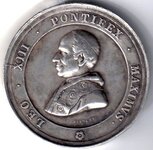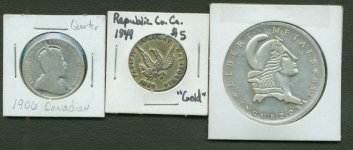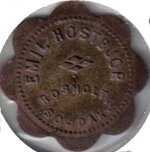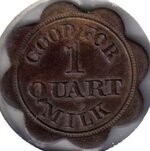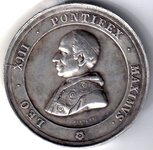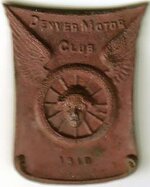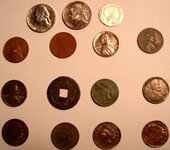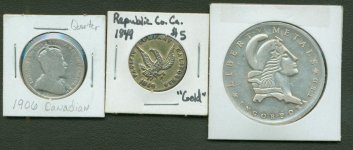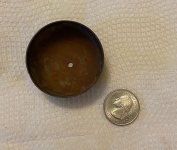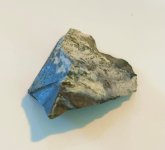D
detector77
Guest
BASICS:
1. Color. Not my first choice, but I do not use a metal detector for it's " color scheme".
2. Weight. Probably not for everyone, but I do not find it at all uncomfortable to use, however most who criticize this great product
will.
3. Performance. Incredible comes to mind, amazing is the term I most often use. May be too slow for some, but is metal detecting
now a speed sport, come on.
4. Would I relace this model with the new Explorer II, I cannot justify the performance to cost ratio, ( just keep reading).
----------------------------------------------------------------------------------------------------------------------------------------------------------------------------------------
I metal detect almost every day, I am retired so I do have the time. The machines I have used have been from all the top name manufacturers, but Mine Lab in my opinion is hands down a winner. Pricey? Yes, not everyone will fork over hard earned money for a metal detector that is this costly, worth the expense?? Without a doubt! ( again, keep reading ).
The learning curve ( as most put it ) is a little different than your typical turn on and go detector, however the difficulty factor that so many have criticized has not been apparant to me, like the first "Bounty Hunter" I used, the first day out was "Trial and Error", even the "Spectrum XLT" was a whole new ball game in terms of "Learning" the new charachteristics of the technology now in hand.
I'm sure I am like most, when I get a new "TOY" I want to run right out and start using it, just knowing that I already know everything there is to know about it, don't fool yourself, with this machine every day is a new experience, the limitless abilities of the Explorer daily amaze me.
Do yourself a favor if you are considering this type machine, READ the manual, read forum reports, read product reviews by the guys who make a living doing this stuff. And most importantly LISTEN, this machine will undoubtebly confuse some users, but only if you let it.
Daily using my Explorer XS, I more often than not am re opening holes in the ground left by previous detectors, and most importantly recovering targets not found by them, I do not know if they were just unable to find the targets, or just settled on nothing could be that deep, well they usually are "That Deep", before using the Explorer XS, my typical targets were in the 4 to 6 inch pange, and believe me most targets that deep are "Keepers", my recovery rate now is consistantly in the 6 to 10 inch range, using the stock 10 1/2 inch coil, that however will soon change as I plan on upgrading to the 15 inch WOT, as soon as possible, I believe the targets I really want to recover will increase with the added depth capabilities of the larger coil, again the weight factor really is not an issue, for me, but the "occasional user" will not care for it. Hell, I was sore after the first time I water skiied, but that is another story.
Alot of critics have said, it's too slow, personally I prefer the casual speed the explorer allows you to use, properly used it is an amazing recovery tool, and after your initial adjusting period you should start to take advantage of the custom discrimination capabilities that this machine offers, again the possibilities are endless, it all boils down to what you want this machine to do, believe me, it will do it.
I am sure that the capabilities of the newer Explorer II probably out perform is some ways, but that depends on the user, settings used, and the interpertation of the data presented, and I guess if speed is your big concern, then by all means "go for it". To me however the performance I have experienced with my Explorer XS is in no short terms INCREDIBLE.
Oh yeah, the hardest part of using this detector is "Putting it Down"
Happy hunting out there, if you don't have one of these machines I'll be checking your holes.....ha ha ha.
l
1. Color. Not my first choice, but I do not use a metal detector for it's " color scheme".
2. Weight. Probably not for everyone, but I do not find it at all uncomfortable to use, however most who criticize this great product
will.
3. Performance. Incredible comes to mind, amazing is the term I most often use. May be too slow for some, but is metal detecting
now a speed sport, come on.
4. Would I relace this model with the new Explorer II, I cannot justify the performance to cost ratio, ( just keep reading).
----------------------------------------------------------------------------------------------------------------------------------------------------------------------------------------
I metal detect almost every day, I am retired so I do have the time. The machines I have used have been from all the top name manufacturers, but Mine Lab in my opinion is hands down a winner. Pricey? Yes, not everyone will fork over hard earned money for a metal detector that is this costly, worth the expense?? Without a doubt! ( again, keep reading ).
The learning curve ( as most put it ) is a little different than your typical turn on and go detector, however the difficulty factor that so many have criticized has not been apparant to me, like the first "Bounty Hunter" I used, the first day out was "Trial and Error", even the "Spectrum XLT" was a whole new ball game in terms of "Learning" the new charachteristics of the technology now in hand.
I'm sure I am like most, when I get a new "TOY" I want to run right out and start using it, just knowing that I already know everything there is to know about it, don't fool yourself, with this machine every day is a new experience, the limitless abilities of the Explorer daily amaze me.
Do yourself a favor if you are considering this type machine, READ the manual, read forum reports, read product reviews by the guys who make a living doing this stuff. And most importantly LISTEN, this machine will undoubtebly confuse some users, but only if you let it.
Daily using my Explorer XS, I more often than not am re opening holes in the ground left by previous detectors, and most importantly recovering targets not found by them, I do not know if they were just unable to find the targets, or just settled on nothing could be that deep, well they usually are "That Deep", before using the Explorer XS, my typical targets were in the 4 to 6 inch pange, and believe me most targets that deep are "Keepers", my recovery rate now is consistantly in the 6 to 10 inch range, using the stock 10 1/2 inch coil, that however will soon change as I plan on upgrading to the 15 inch WOT, as soon as possible, I believe the targets I really want to recover will increase with the added depth capabilities of the larger coil, again the weight factor really is not an issue, for me, but the "occasional user" will not care for it. Hell, I was sore after the first time I water skiied, but that is another story.
Alot of critics have said, it's too slow, personally I prefer the casual speed the explorer allows you to use, properly used it is an amazing recovery tool, and after your initial adjusting period you should start to take advantage of the custom discrimination capabilities that this machine offers, again the possibilities are endless, it all boils down to what you want this machine to do, believe me, it will do it.
I am sure that the capabilities of the newer Explorer II probably out perform is some ways, but that depends on the user, settings used, and the interpertation of the data presented, and I guess if speed is your big concern, then by all means "go for it". To me however the performance I have experienced with my Explorer XS is in no short terms INCREDIBLE.
Oh yeah, the hardest part of using this detector is "Putting it Down"
Happy hunting out there, if you don't have one of these machines I'll be checking your holes.....ha ha ha.
l


 ?seeya ? ? ? ? ? ? ? ? ? ? ? ? ? ? ? ? ? ? ? ? ? ? ? ? ? ? ? ? ? ? ? ? ? ? ? ? ? ? ? ? ? ? ? ? ? ? ? ? ? ? ? ? ? ? ? ?
?seeya ? ? ? ? ? ? ? ? ? ? ? ? ? ? ? ? ? ? ? ? ? ? ? ? ? ? ? ? ? ? ? ? ? ? ? ? ? ? ? ? ? ? ? ? ? ? ? ? ? ? ? ? ? ? ? ?
